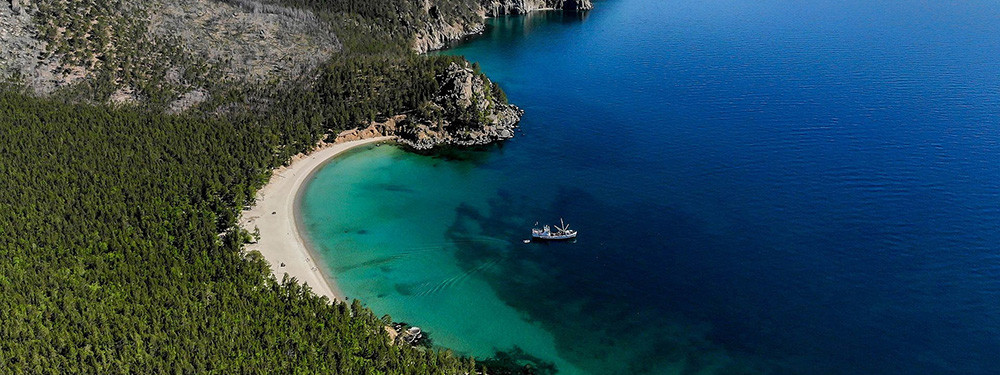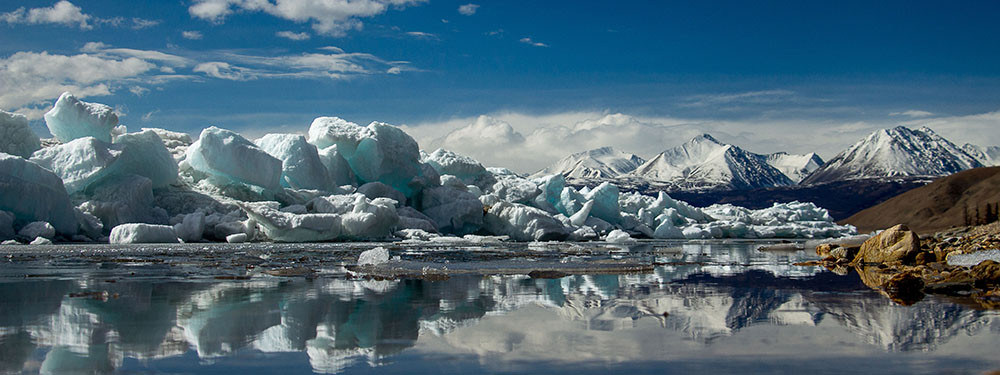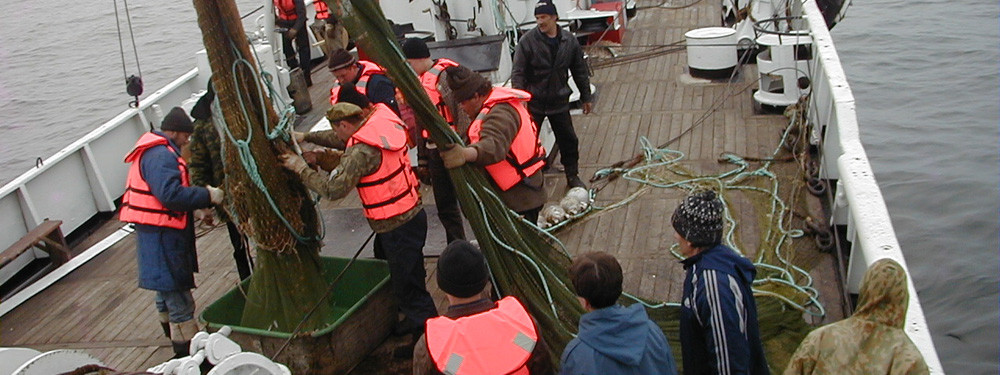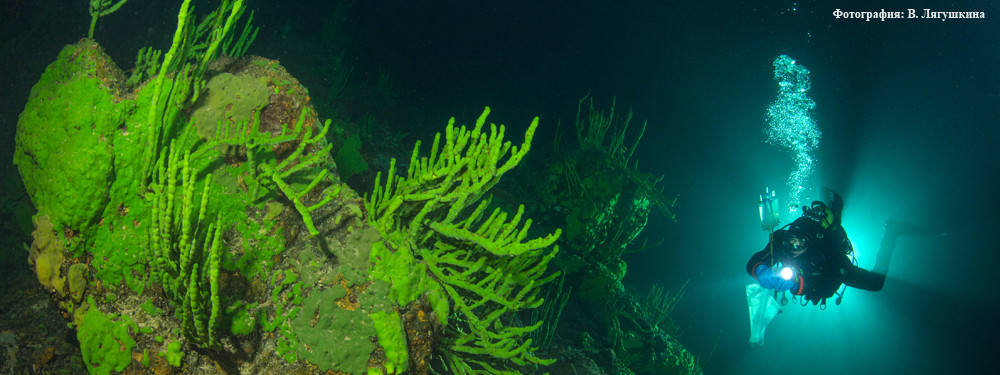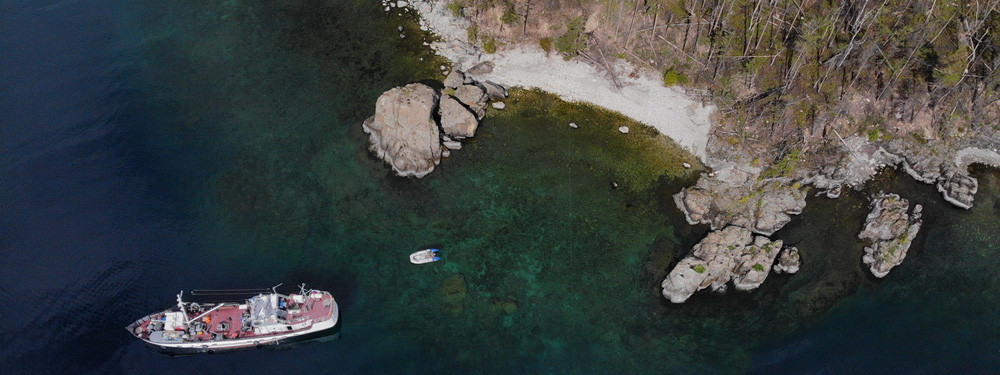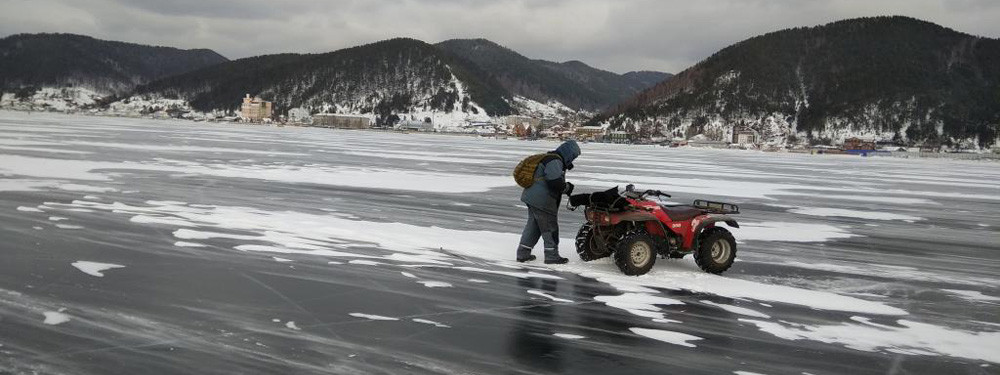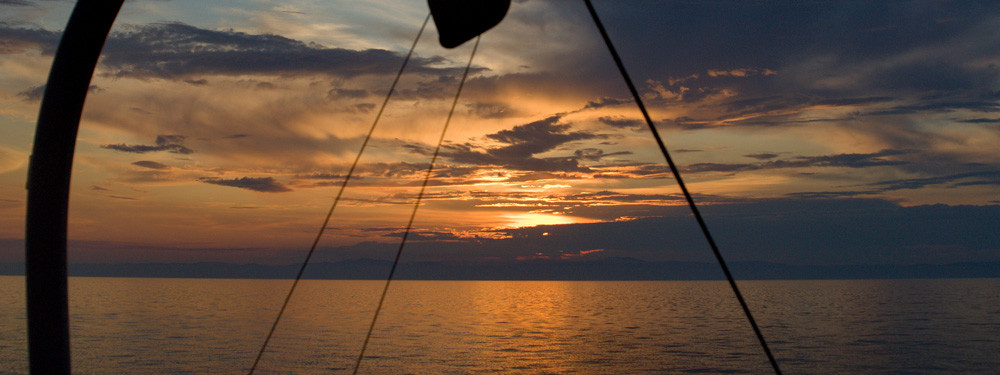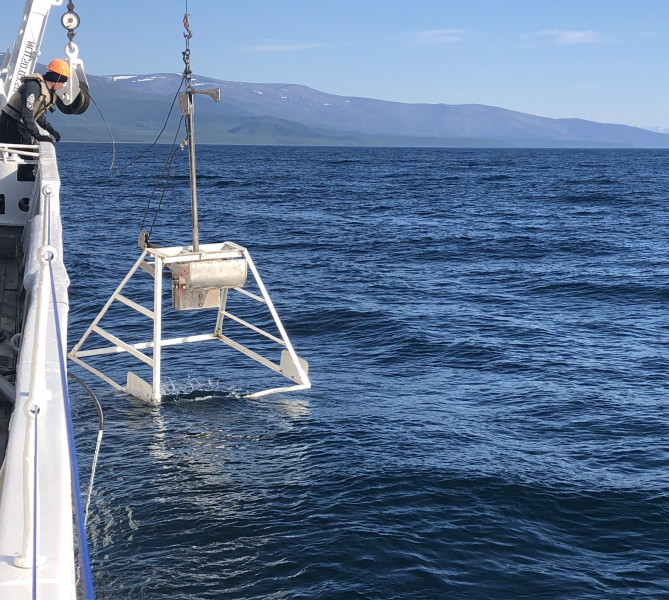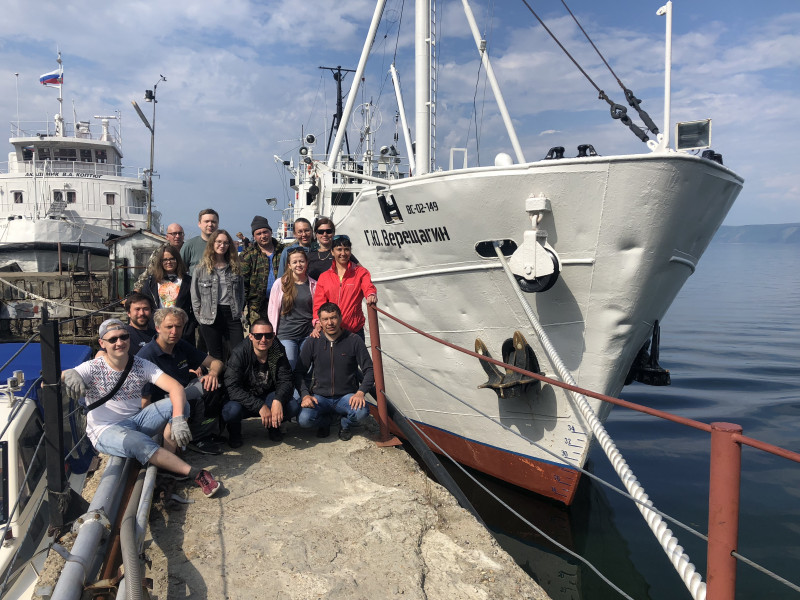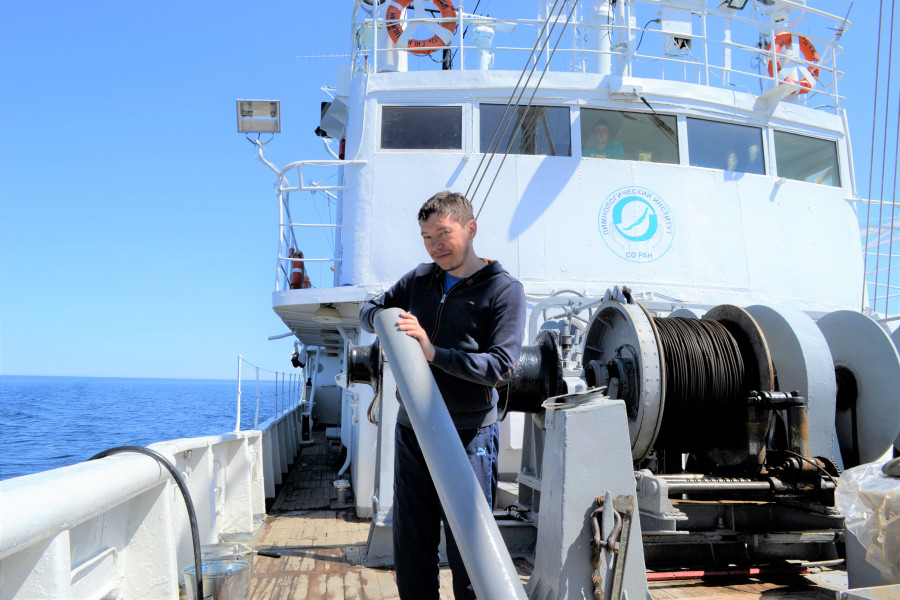Expedition onboard RV “G.Yu. Vereshchagin” from June 17 to 26, 2020
The expedition within the framework of the program “Study of the Influence of Mud Volcanoes and Methane Seeps on Biological Communities from the Abyssal Zone of Lake Baikal” was carried out onboard RV “G.Yu. Vereshchagin” in the hydrocarbon discharge areas of Southern, Central and Northern Baikal, including the terrestrial hot springs.
The aim of the expedition was to study biological communities, including the search for new phylogenetic lineages of microorganisms, in the zones of temperature field anomalies and fluid flows in the water and bottom sediments of three basins of Lake Baikal as well as in the terrestrial hot springs of Northern Baikal.
The planned fieldworks were completely fulfilled at 19 stations. Bottom sediments were sampled using a large gravity corer, a bottom sampler and a grab; water samples were taken in three basins of Lake Baikal using a Rosette Sampler, and soil and water were sampled in three terrestrial hot springs (Khakusy, Kotelnikovskiy Cape, and Davsha). Measurements of pH, Eh, T, and oxygen were carried out in each grab sample raised on the surface. Methane concentrations were determined in 166 water samples and 122 samples of bottom sediments.
One of the tasks of the expedition was to study geochemical parameters that can characterize the oxygen regime, the type of discharging fluid, and the presence of the possible electron acceptors for microorganisms inhabiting the anaerobic zone. To determine the chemical composition of pore waters, approximately 200 samples of bottom sediments were taken from ten cores and seven grabs.
Another task was to search for and study of habitats of colorless sulfur bacteria in bottom sediments of Lake Baikal and terrestrial hot springs. Bacteria of the genus Thiothrix were detected in hot springs of Northern Baikal; samples of these bacteria were taken for microscopy and molecular biological analysis as well as to isolate pure and enrichment cultures. The samples of colorless sulfur bacteria, Thioploca, were detected and collected near the Babushkin methane seeps (depth 305 m), the Goloustnoye methane seep (393 m) and the Tolsty oil seep (323 m).
To support or reject the hypothesis that thermophilic microorganisms come together with gas-saturated fluids from deep sediments rather than from hot springs of the Baikal Rift Zone, the water column samples of the terrestrial springs of Northern Baikal were taken for metagenomic analysis and to obtain pure and enrichment cultures of thermophilic organisms. The composition of microbial communities from the terrestrial hot springs will be compared with the composition of microorganisms previously obtained from the bottom sediments of Lake Baikal.
To study the diversity and structure of microbial communities in the areas with high concentrations of sulfate, nitrate and acetate ions as well as iron ions, 71 samples of bottom sediments were collected to extract total DNA containing gas hydrates, authigenic carbonates, oil and ferromanganese crusts.
To study the diversity of the total microbial community and its dependence on the methane concentrations from the water column near the hydrocarbon discharge sites (Kedr and Tolsty), shallow-water methane seepages of the Upper Angara, Frolikha and Babushkin rivers as well as at the reference stations of Southern, Central and Northern Baikal, 52 samples were taken to extract DNA, and 85 samples – to assess the total number of microorganisms and methanotrophic bacteria using in situ hybridization (FISH analysis).
To study ectosymbionts and ectosymbiotic consortiums, benthic invertebrates (amphipods, ostracods, decapods, and mollusks) were collected near the hydrocarbon discharge sites as well as in the hot springs of Khakusy, Davsha, and Kotelnikovskiy Cape. 40 samples were fixed for microscopy.
To assess the number of hydrocarbon-oxidizing microorganisms and study the metabolism of microorganisms involved in anaerobic oil oxidation, samples of the bottom sediments and water column were taken near the Toslty oil seep. During the expedition, inoculation was made on the media added by oil and other hydrocarbons to obtain enrichment cultures of anaerobic microorganisms. In addition to oil enrichment cultures, inoculation was made to culture methanotrophic bacteria from the surface oxidized layers of bottom sediments.
Near the Kedr mud volcano, samples of authigenic carbonates were taken and inoculated on selective media to study the composition of microbial communities that carry out anaerobic oxidation and methane generation. Simultaneously, the sediments in the area of the carbonate formation were sampled for isotope and mineralogical investigations and to detect biomarkers. Experiments to study mechanisms of the formation of the authigenic carbonates were also set up in laboratory conditions.




